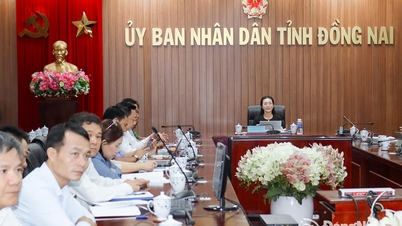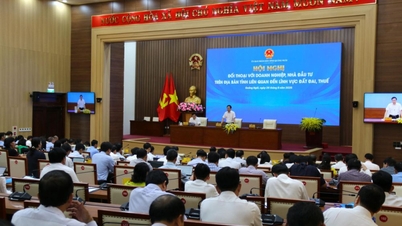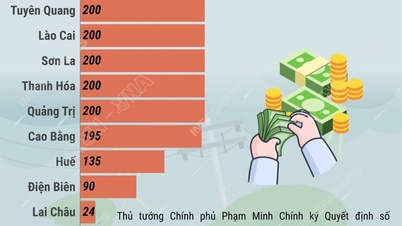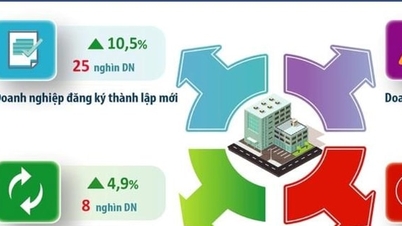Few people, much work
Information from the Civil Judgment Enforcement Administration ( Ministry of Justice ) shows that in 2025, the National Assembly assigned the target of completing 83.90% of cases and 51.90% of money. The Civil Judgment Enforcement System has successfully executed more than 577,000 cases, exceeding the target by 0.35%, recovering more than 150,000 billion VND, exceeding the assigned target by 4.23%.

This is a remarkable result in the context of the work in 2025 taking place under enormous pressure. Compared to 2024, the number of cases and the amount of money to be executed have both increased sharply. In particular, there are many "major cases" of unprecedented scale, typically the case of Truong My Lan and accomplices with more than 43,000 victims, the value of the execution exceeding 50,000 billion VND and thousands of real estates to be handled nationwide.
Not only that, in 2025, nearly 1,000 enforcement officers retired under Decree No. 178/2024/ND-CP, causing a serious shortage of human resources. The situation of "few people, many jobs" puts pressure on the remaining team, with each enforcement officer having to handle an average of 342 cases, equivalent to an enforcement value of more than 235 billion VND - a number many times higher than in previous years.
According to Director of the THADS Management Department Nguyen Thang Loi: "In the context of streamlining the apparatus from the central to the grassroots level, the achievements in 2025 not only contribute to effectively recovering assets for the State and people, strengthening trust in the strictness of the law, but also open up new premises and momentum for 2026."
Resolute direction, synchronous solutions
To achieve the above outstanding results, the Ministry of Justice has implemented many drastic and synchronous measures. Right from the beginning of the year, the Ministry has improved the organization, appointed new leaders at 34 provincial and municipal THADS agencies, and at the same time resolved the regime for redundant civil servants, ensuring the stability of the apparatus.
The THADS Management Department also strengthened its direction and closely monitored the system-wide indicators; established many working groups to directly support localities in removing difficulties; organized online conferences to promptly grasp and handle problems. In particular, the "Guideline for implementing the model of a single-level civil judgment enforcement agency" which was released electronically has become an important document for localities.
A highlight of the year was the operation of a one-level THADS agency model, eliminating intermediaries and streamlining the apparatus. This model has helped focus resources on the professional team, improve leadership efficiency, shorten processes, minimize negativity and enhance transparency.
Along with organizational innovation, the entire industry promotes digital transformation: Applying electronic receipt systems, decision support software, document processing via the interconnection axis, notifications via VNeID, increasing the use of digital signatures... These advances not only help save time and costs but also modernize management and operations, narrowing the gap between localities.
Challenges ahead
However, the overall picture of the industry also shows significant challenges. Over the past 10 years, the number of cases to be executed has increased by more than 33.3%, the amount of money to be executed has increased by nearly 477%, while the entire system's payroll has decreased by nearly 1,400 people. This means that the pressure on each enforcement officer is increasingly heavy. In addition, the initial phase of implementing the one-level agency model also poses difficult problems: Facilities in many places do not meet the requirements, management software is still in the final stage, while the workload is forecast to continue to increase.

The current work pressure is unprecedented. If we do not promptly supplement human resources, especially the enforcement team, and at the same time strongly innovate management and operation methods, completing the 2026 targets will face countless difficulties.
Faced with these difficulties, the Ministry of Justice said it has clearly defined the direction of action for 2026. “The civil enforcement sector must resolutely carry out its tasks from the first days of the year, not allowing the idea of resting after the end of 2025. At the same time, it is necessary to urgently improve the organization, recruit civil servants, add enforcement officers, improve the quality of human resources and strongly promote digital transformation,” Minister of Justice Nguyen Hai Ninh emphasized.
Along with that, the Ministry of Justice will focus on perfecting the institution, focusing on building the Draft Law on Civil Judgment Enforcement (amended) to submit to the National Assembly at the 10th Session, 15th tenure. The draft law is expected to shorten the process, reduce the cost of organizing the enforcement of judgments, and at the same time promote the socialization of civil judgment enforcement activities.
The Ministry of Justice will also expand the scope, tasks, and authority of Bailiffs and Executors (private organizations that carry out the task of enforcing judgments). This will help reduce the burden on the State THADS agency, while creating more legal tools for people and businesses to have more diverse and transparent choices when requesting enforcement. This is considered one of the breakthrough solutions, helping the THADS system develop sustainably, in line with international trends and practices.
Source: https://hanoimoi.vn/thi-hanh-an-dan-su-2025-vuot-chi-tieu-giua-ap-luc-lon-718328.html



![[Photo] Students of Binh Minh Primary School enjoy the full moon festival, receiving the joys of childhood](https://vphoto.vietnam.vn/thumb/1200x675/vietnam/resource/IMAGE/2025/10/3/8cf8abef22fe4471be400a818912cb85)
![[Photo] Prime Minister Pham Minh Chinh chairs meeting to deploy overcoming consequences of storm No. 10](https://vphoto.vietnam.vn/thumb/1200x675/vietnam/resource/IMAGE/2025/10/3/544f420dcc844463898fcbef46247d16)







































































































Comment (0)